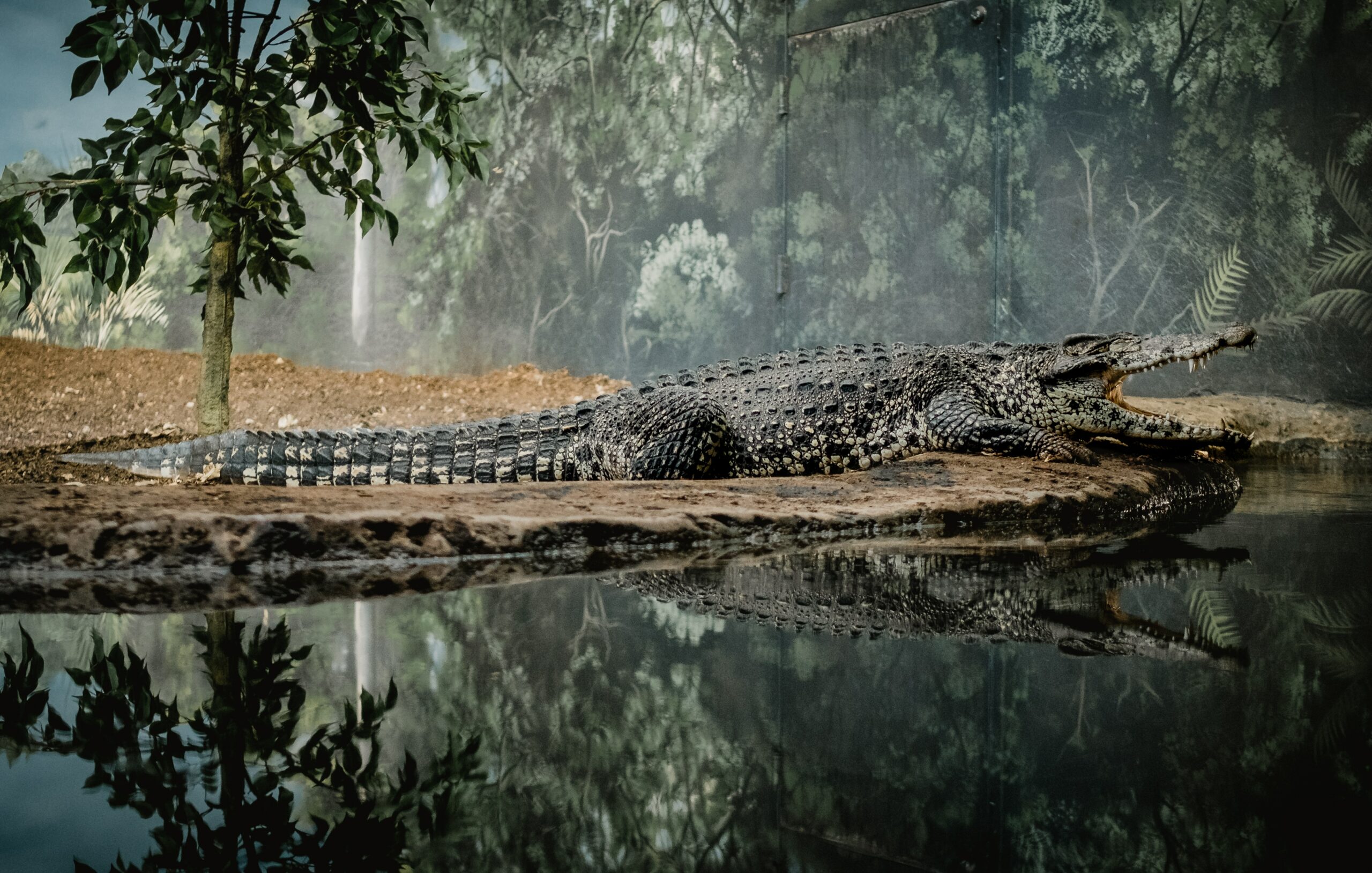Crocodiles are feared, respected, and admired reptiles that often stand atop wildlife wishlists for those on safari. Belonging to the animal kingdom, class Reptilia, and order Crocodylia, they are ancient creatures with unique characteristics and behaviors.
Crocodiles are large, semi-aquatic reptiles with a long and powerful body, a broad snout, and a strong tail. They have a tough, scaly skin that provides protection and insulation. Crocodiles are well-adapted to their aquatic lifestyle, with webbed feet that aid in swimming and navigating through water.
They have sharp, interlocking teeth designed for capturing and holding prey. One distinctive feature of crocodiles is their ability to keep their eyes, ears, and nostrils above the water surface while the rest of their body remains submerged, allowing them to stealthily observe their surroundings.
There are 15 recognized species of crocodiles. Some of the most well-known species include the Nile crocodile, American crocodile, Saltwater crocodile, Mugger crocodile, and the critically endangered Siamese crocodile.
What makes crocodiles unique?
The crocodile possesses several remarkable traits that set them apart from other reptiles. One notable feature is their ability to undergo a form of crypsis called “longitudinal body alignment.” This means they can lie motionless in the water, with their bodies aligned with the shoreline, making them appear like logs or debris, thus enhancing their chances of surprising unsuspecting prey. Crocodiles are also known for their incredible strength and jaw power.
Their bite force is one of the strongest in the animal kingdom, allowing them to break bones and overpower even large prey. Crocodiles are revered for their ancient lineage, powerful presence, and vital ecological role.
As apex predators, they help maintain the balance of ecosystems by controlling prey populations and shaping habitat dynamics. While they can be fearsome, crocodiles are also crucial to the biodiversity and functioning of their habitats, making them an integral part of our natural world.
Summary
In conclusion, crocodiles are magnificent creatures with unique adaptations and behaviors. Their distinct physical features, diverse species, and ecological importance make them a subject of awe and fascination.
By understanding and appreciating these ancient reptiles, we can foster a greater respect and appreciation for the remarkable diversity of life on our planet.



































































